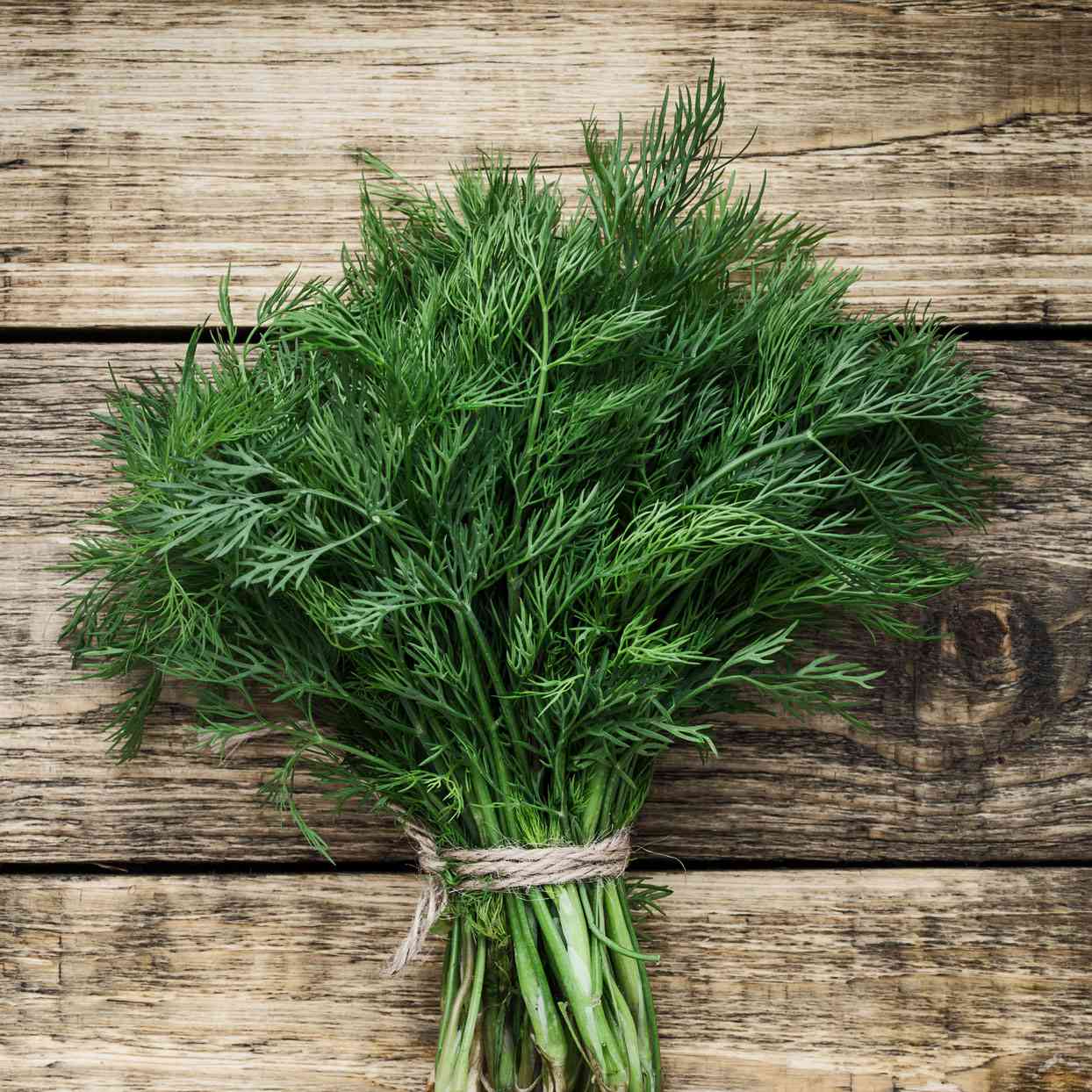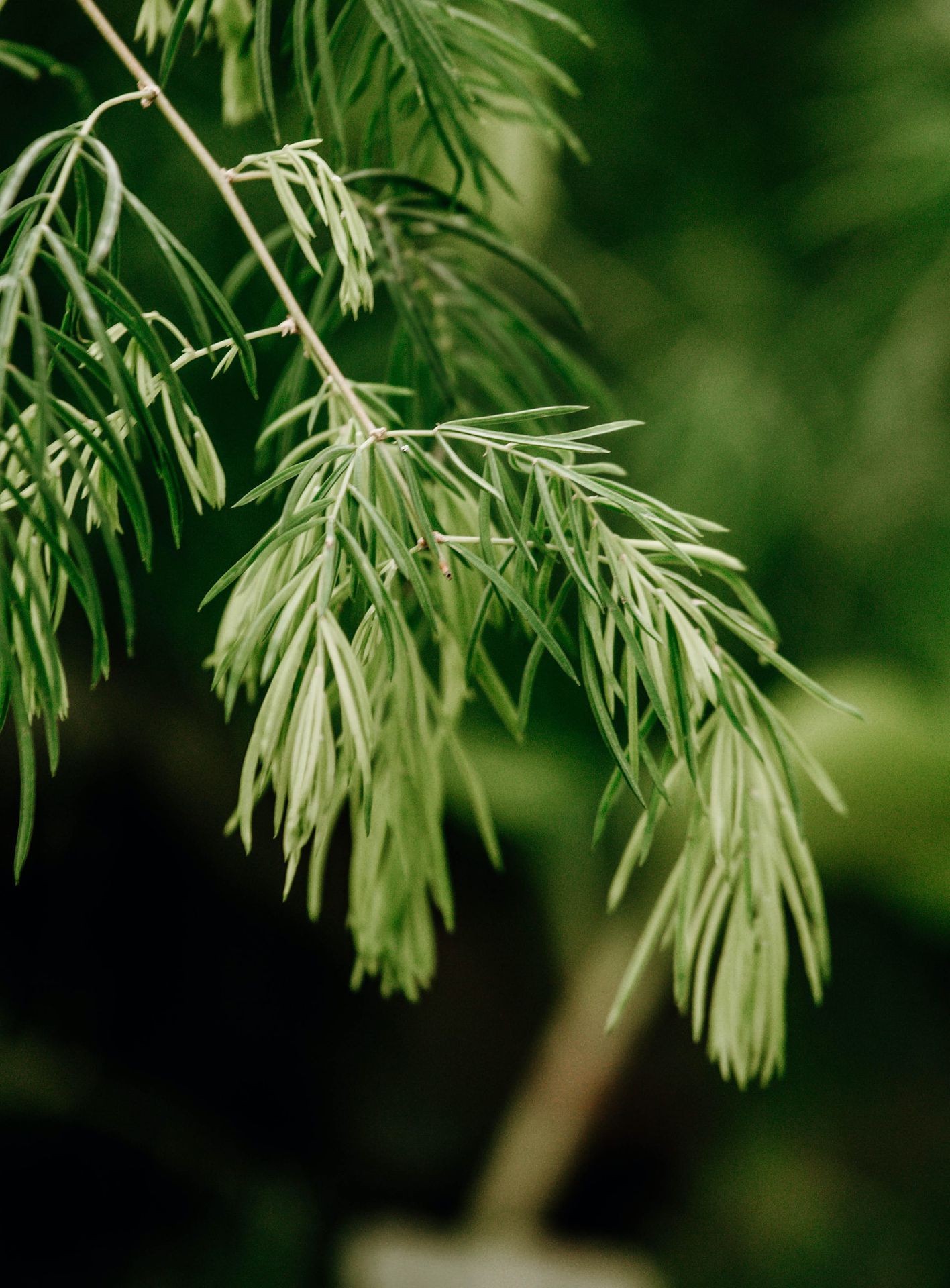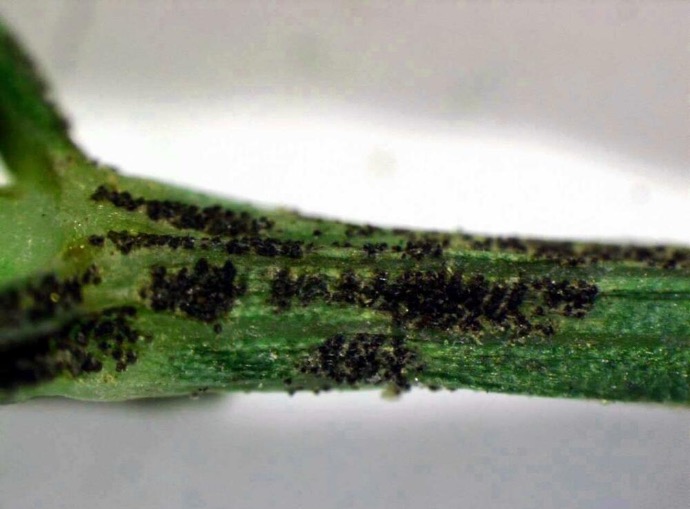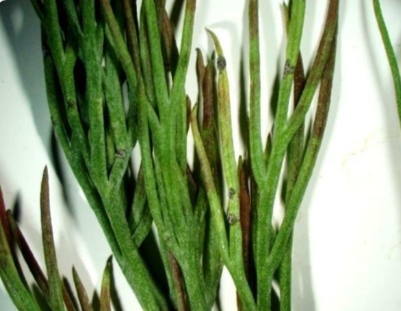Dill
Dill is an annual, 24-36 inches tall, and frost-tolerant. It prefers well-drained, loamy soil in full sun to partial shade. Keep the soil moist. Dill is both edible and has medicinal properties.

Habit
Annual
Height
40 to 60 cm
Growth
Fast
Soil
Well Drained, loamy
Shade
Full Sun to partial shade
Moisture
Moist
Edible
Yes
Medicinal
Yes
Origin
Mediterranean
Climatic Condition
Cool, temperate
Temperature (°)
10 to 25
Humidity (%)
50 to 70
Potting media
Loamy soil mix
Fertilizers
Balanced organic mix
Watering
Moderate
Plant Weight
100 to 300 g
Flowering Time
Spring to Summer
Soil Ph level
5.5 to 7.5
Water Ph level
6.0 to 7.5
Soil EC
0.5 to 1.0
Yield Per Plant
2 to 5 kg per plant
NPK ratio
05:05:05
life Span
Annual
Health Benefits
Rich in antioxidants, aids digestion, anti-inflammatory.
Suggested Grow Media or Potting Mix ?
50% loamy soil, 30% compost, 20% sand
Suggested Fertigation/Fertilizers
Fertilize every 2-3 weeks with a balanced fertilizer.
Common Diseases and Remedies
cercospora leaf Spot, blight.
Small, necrotic flecks on leaves which develop a chlorotic halo and expand into tan brown necrotic spots; lesions coalesce and cause leaves to wither, curl and die
Crop rotation , plow crop debris into the soil after harvest
HEALTH BENEFITS
- Digestive Health: Aids digestion, relieves bloating, and reduces gas.
- Antioxidant Properties: Rich in flavonoids, which help fight inflammation.
- Bone Health: Contains calcium and magnesium, which support strong bones.
- Immune Boosting: Has antimicrobial properties that help fight infections.
- Heart Health: May help regulate cholesterol and blood sugar levels.
What Is A Dill Plant?
Dill is an annual herbaceous plant known for its pinnate leaves and fragrant seeds. It belongs to the celery family and is often used in cooking because it has a unique taste similar to anise or licorice. Dill is often used to flavor pickles, salads, soups, and seafood dishes. It also has medicinal properties and is said to aid digestion and soothe gastrointestinal problems. The dill plant, scientifically known as Anethum graveolens, is an aromatic herb commonly used in cooking. It belongs to the celery family and is native to southern Europe and western Asia. Dill leaves, seeds, and sometimes even the stems are used in cooking to add flavor to dishes, especially in pickles, soups, salads, and seafood recipes. Additionally, dill is highly valued for its medicinal properties and is said to aid digestion, reduce inflammation, and act as a natural diuretic. Dill (Anethum Graveolens) is an annual plant in the celery family (Umbelliferae). Native to North Africa, Iran, and the Arabian Peninsula, it is widely cultivated in Eurasia, where the leaves and seeds are used as herbs and spices to flavor dishes.

What are the different types of dill plant?
1. Common dill (Anethum Graveolens):-
This is a variety commonly used for culinary purposes and is prized for its pinnate leaves and unique flavor.
2. Bouchedill:-
Also known as ``cedar leaf dill,'' this variety has a more compact habit and is often preferred for gardening in containers or small spaces. It tastes similar to regular dill, but a little stronger. Both types of dill are used in cooking, especially for pickling fish, seasoning, and flavoring soups, salads, and sauces.
3.Dill Herb: -
This refers to the pinnate leaves of the dill plant, commonly used as a culinary herb. Dillweed has a delicate flavor with notes of anise and lemon, and is often used raw in salads, dips, and dressings, or to season fish, poultry, and vegetables.
4. Dill Seed:-
Dill seeds are the small oval seeds of the dill plant. It has a stronger flavor than dillweed, with more concentrated anise and citrus flavors. Dill seeds are commonly used as a seasoning in brine, spice blends, breads, soups, and stews.

How to care for Dill plant?
1. Location
Dill plants grow in well-drained soil and sunny locations. Choose a spot in your garden or balcony that receives at least 6 to 8 hours of direct sunlight each day. Make sure the soil is loose, fertile, and well-drained to promote healthy growth. If planting in a pot, be sure to make drainage holes to prevent water from seeping in. Plant dill in a sunny location with well-drained soil, either in the garden or in a container with drainage holes.
2. Sunshine
Dill plants thrive in full sun and require at least 6 to 8 hours of direct sunlight each day for optimal growth and development. Lack of sunlight can result in leggy, weak plants and lower yields. Therefore, plant dill in a location where it receives full sunlight throughout the day to promote healthy growth and lush foliage.
3. Soil
Dill plants prefer fertile, loose, well-drained soil. Good drainage is important to avoid water blockages that can lead to root rot. Additionally, a soil pH between 5.5 and 6.5 is optimal for growing dill. Adding organic matter, such as compost, to the soil improves soil texture and fertility, creating a healthy environment for dill plants to grow.
4. Hydration
Although dill plants require constant moisture to grow, it is important not to overwater them. Keep the soil evenly moist and allow it to dry slightly between waterings. Water liberally to make sure the soil is saturated to promote healthy root development. However, be careful not to waterlog it, as excessive moisture can cause root rot and other problems. Adjust watering frequency based on weather conditions and always check soil moisture before watering to avoid over- or under-watering.

5. Nourishment
Dill plants require adequate nutrition to grow. Prioritize a balanced, nitrogen-rich fertilizer to support healthy foliage growth. Fertilize sparingly, as dill does not require a lot of fertilizer. One or two applications of water-soluble fertilizer during the growing season can promote vigorous growth and fragrant foliage. Too much fertilizer can cause excessive leaf growth and reduce flavor. Therefore, it is important to use fertilizers wisely.
6. Issues
Common pests such as aphids, caterpillars, and spider mites can attack dill plants and damage the leaves and stems. Dill plants are susceptible to fungal diseases such as powdery mildew, downy mildew, and powdery mildew, which can affect growth and health. Dill plants can suffer from environmental stresses such as excessive heat, drought, or lack of sunlight, which can result in stunted growth or wilting. Improper watering can cause root rot (if over-watered) or dryness (if under-watered), which can have a negative impact on the overall health of the plant.
What Are The Benefits Of Dill ?
Culinary uses: Dill is often used as an herb to add flavor to a variety of dishes, especially salads, soups, sauces, and pickles.
Nutritional Value: Dill is rich in vitamins and minerals such as vitamin C, vitamin A, manganese, and iron.
Digestive stimulant: Dill is known to be a digestive stimulant, which helps reduce digestive problems such as gas and bloating.
Antioxidant properties: Dill contains compounds with antioxidant properties that help protect cells from free radical damage.
Antibacterial Properties: Some research suggests that dill may have antibacterial properties that help fight certain types of bacteria.
Calming Effects: Dill has mild sedative properties and is thought to aid in relaxation and stress relief.

FAQS about Growing Dill Plant?
1.How to Choose a Location?
Dill prefers full sun but can tolerate some partial shade. Select a spot in your garden that receives at least 6-8 hours of sunlight per day.
2. How much sunlight does dill plant need?
Dill thrives in full sunlight, requiring at least 6 to 8 hours of direct sunlight per day for optimal growth. It's important to plant dill in a location where it can receive adequate sunlight to develop properly.
3.When is the best time to harvest dill?
The best time to harvest dill is in the morning after the dew has dried but before the sun gets too hot. This is when the flavor and aroma of the herb are at their peak.
4.What are some culinary uses for dill?
Dill is a versatile herb with various culinary uses: Dill is commonly used in pickling cucumbers to make dill pickles. It adds a distinctive flavour to the brine. Dill leaves can be chopped and added to salads, particularly those containing cucumber or potato, for a fresh, herbal flavour. Dill pairs well with fish and seafood dishes. It can be used as a seasoning for grilled salmon, added to fish cakes, or sprinkled over shrimp. Dill can enhance the flavor of soups and stews, such as potato soup or fish chowder. It's often added towards the end of cooking to preserve its delicate flavour. Dill can be incorporated into creamy sauces like tzatziki or yogurt-based dressings for a tangy and herbaceous taste. Dill can be added to bread dough or savory baked goods like muffins or scones for an aromatic twist. Dill can be included in marinades or dry rubs for meats like chicken or lamb to infuse them with flavor before grilling or roasting.
5. How can I preserve dill for later use?
Preserving dill for later use is quite simple. Here are a few methods you can try: Tie bunches of dill together and hang them upside down in a well-ventilated area away from direct sunlight. Once completely dry, store the dried dill in an airtight container in a cool, dark place. Wash and chop the dill, then spread it out on a baking sheet and freeze until solid. Transfer the frozen dill to a freezer bag or container and store in the freezer for up to 6 months. Pack clean, dry dill sprigs into a sterilized jar and cover with oil or vinegar. Seal the jar tightly and store it in a cool, dark place. The dill-infused oil or vinegar can be used in cooking or as a salad dressing. Make a dill pickle brine and pickle fresh dill sprigs along with other vegetables like cucumbers, carrots, or green beans. Store the pickled dill in sterilized jars in the refrigerator for several months.


